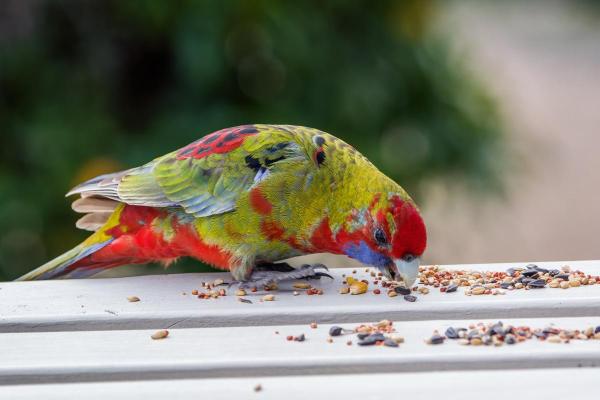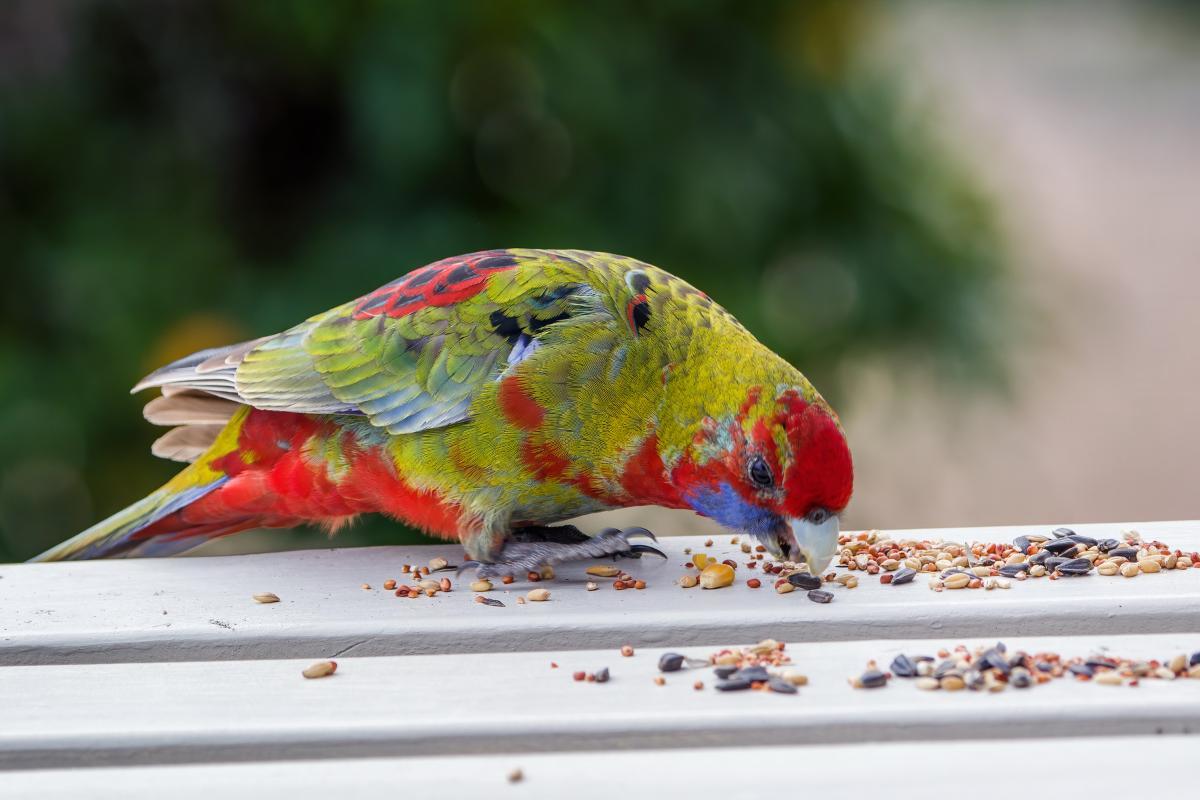Types of Granivore Animals


Granivorous animals are those that carry out seed predation as their main form of nourishment. This means they search for seeds and grains to acquire the nutrients they need for survival. Without them, they will be unable to survive. There are other animals which will supplement their main diet with seeds, but it is important to distinguish these from true granivores. Granivorous animals are vital members of their ecosystem, often helping to disperse seeds of plants which would not survive without them. These animals can be birds, mammals and even some types of invertebrate. Learn more as thedailyECO shares the different types of granivore animals.
What are granivorous animals?
Granivorous animals or granivores are animals that carry out seed predation. Otherwise known as granivory, this is a process where an animals diet is primarily based on seeds or grains. The types of seed predators in nature are very diverse. We most associate them with mammals and birds, but there are also insects which are considered granivores. There are some reptiles and even fish which include seeds in their diet, although none are considered true granivores.
The diet of granivores can have a notable impact on plants. When feeding on seeds, they often damage them and prevent their seeds form becoming viable. This relationship between granivores and plants is fundamental to understanding the dynamics of ecosystems. Many seed predators are necessary for the dispersal of seeds of certain plants. This is often the case of dropping seeds while trying to collect or transport others.
We can find fascinating examples of feeding adaptations among granivores. For example, sparrows, pigeons and other birds have specially designed beaks which can break the hard shell of certain seeds. Insects such as bedbugs have their own specialized mouthparts to suck out the nutrients of seeds. These interactions not only affect the survival of the seeds consumed, but also influence the distribution of plant species in a given area.
You may wonder what seed predators eat. Understanding their diet is vital to understanding these species and improving their conservation. In general, these are some of the seeds that granivorous animals feed on:
- Pumpkin
- Corn
- Sunflower
- Walnuts
- Hackberry
- Barley
- Wheat
- Sesame
- Rice
To learn more fundamental aspects of seeds and grains, you may want to discover what are seeds in our related explanatory guide.
Characteristics of granivorous animals
While we may have a basic definition of what are granivore animals, we can better understand them by discovering the specific characteristics of seed predators:
Morphological adaptations of granivores
- Beaks and teeth: many granivorous birds have robust beaks adapted to crack hard seed shells. In the case of mammals such as squirrels and mice, they have incisor teeth that allow them to gnaw and wear down seeds for consumption.
- Digestive structures: granivores have adaptations in their digestive system which facilitate the breakdown of seeds and grains. These include the gizzard in birds which grinds down seeds and increases the efficiency of nutrient absorption.
Granivore habitats
These animals require habitats where seeds and grains are abundant. They usually inhabit areas adjacent to fruit forests or savannas, avoiding ecosystems such as mangroves where food resources are limited. As the agricultural industry has developed, many granivores have become pests due to the consumptions of crops.
Seed dispersal
Granivores play a vital role in seed predation, which can affect the viability of the plants they consume. They also facilitate seed dispersal through their excrement and accidental dispersal, contributing to ecosystem regeneration.
Discover more about seed dispersal with our article on how do plants spread seeds?
Finding food
Many granivores undertake significant daily journeys to access food sources. For example, some species of pigeons may fly up to 12 miles (20 km) to forage in nearby forests.
They have an impact on biodiversity
By influencing the distribution and abundance of plant species, granivores contribute to maintaining biodiversity in ecosystems. Their predation and seed dispersal affect the composition of the local flora.
Learn about ecosystems which have a high level of biodiversity with our article on what is a biodiversity hotspot?

Types of granivore animals
As we have explained, true seed predators only consume seeds or consume seeds as the main source of nutrition in their diet. However, there are some animals which are types of granivore, but they may also include other food in their diet. They include:
Granivorous herbivores
In addition to consuming seeds or grains, these granivores supplement their diet with other plant sources, such as leaves, fruits and flowers. This type of granivore animal includes many species of rodents and some birds that can adapt to different food resources depending on seasonal availability. For example, in environments such as deserts, these animals can be crucial for seed dispersal. This is because their consumption helps regulate plant populations.
Granivorous omnivores
Omnivorous granivores feed on seeds or grains but also include foods of animal origin in their diet, although to a lesser extent. This can include insects, animal remains or even decaying organic matter. This type of diet allows them to be more flexible in their search for food, which is especially useful in ecosystems where seed availability can fluctuate. Birds that feed on seeds and also hunt insects are clear examples of omnivorous granivores.
In addition to classification based on diet, granivores can also be divided according to the time at which they consume seeds:
Pre-dispersal seed predators
This group includes those animals that feed on the seeds while they are still on the plant. These species are often specialized insects that have adapted their life cycle to the seasonal availability of the seeds.
Post-dispersal seed predators
This group encompasses a variety of animals that consume seeds after they have been released or fallen. These include birds, mammals and insects that have more generalist feeding habits, adapting to the heterogeneity of seeds in their environment.
Discover the types of herbivorous birds that exist in our related guide.
Examples of granivore animals
Granivorous birds
- Macaw
- Chickens
- Pheasants
- Turkeys
- Quails
- Ducks
- Goldfinch
- Sparrows
- Pigeons
- Finches
Discover more about some of these seed predator birds with our article on what are passerine birds?
Granivorous mammals
- Hamster
- Squirrels
- Gerbils
- Chipmunks
- Mice
- Pigs
- Guinea pig
- Otter
- Moles
- Bats
- Capybaras
Here you can discover the different types of mammals where we share their characteristics and examples.
Granivorous invertebrate animals
- Weevils
- Moths
- Worms
- Crickets
- Termites
- Beetles
- Snails
If you want to know more about plants that reproduce via seeds, take a look at our article on the different types of spermatophyte plants.

If you want to read similar articles to Types of Granivore Animals, we recommend you visit our Biology category.
- Hickman, C., Roberts, L., & Parson A. (2000). Comprehensive principles of zoology. McGraw Hill Interamericana: Spain.
https://www.sciencedirect.com/science/article/pii/S0272771414003023 - Milesi, F. (2006). Selection of feeding sites by granivorous birds in the Monte Desert. University of Buenos Aires. https://www.researchgate.net/publication/272163742_Seleccion_de_sitios_de_alimentacion_por_aves_granivoras_en_el_desierto_del_Monte







